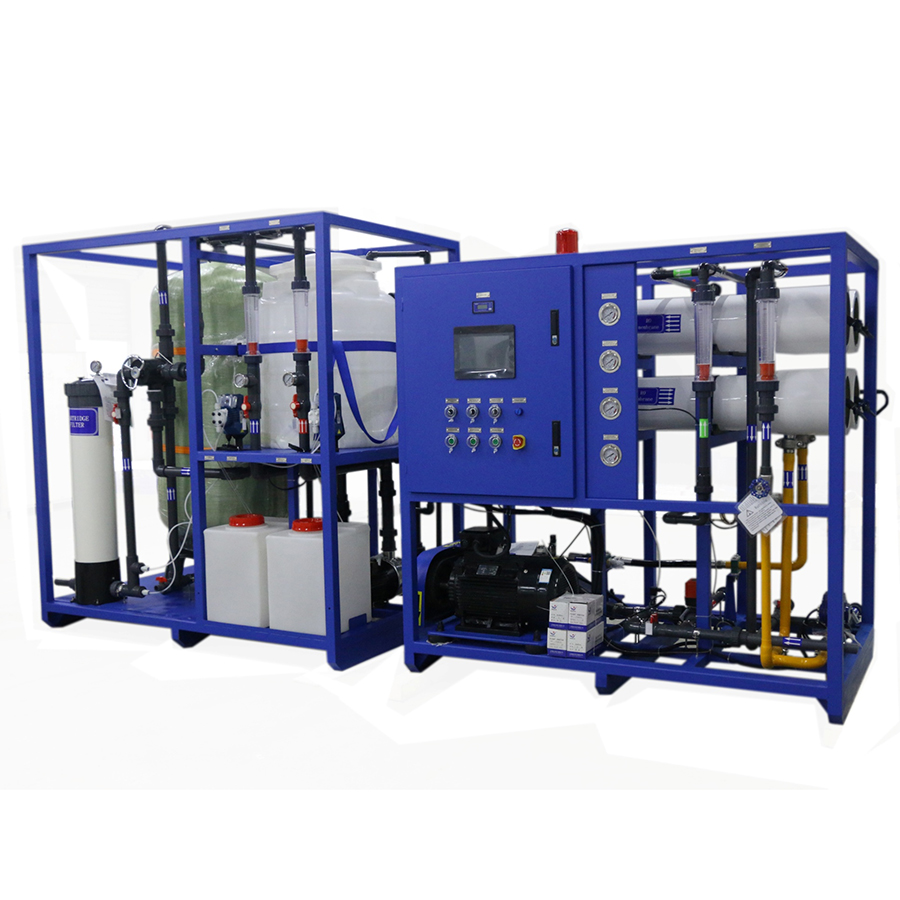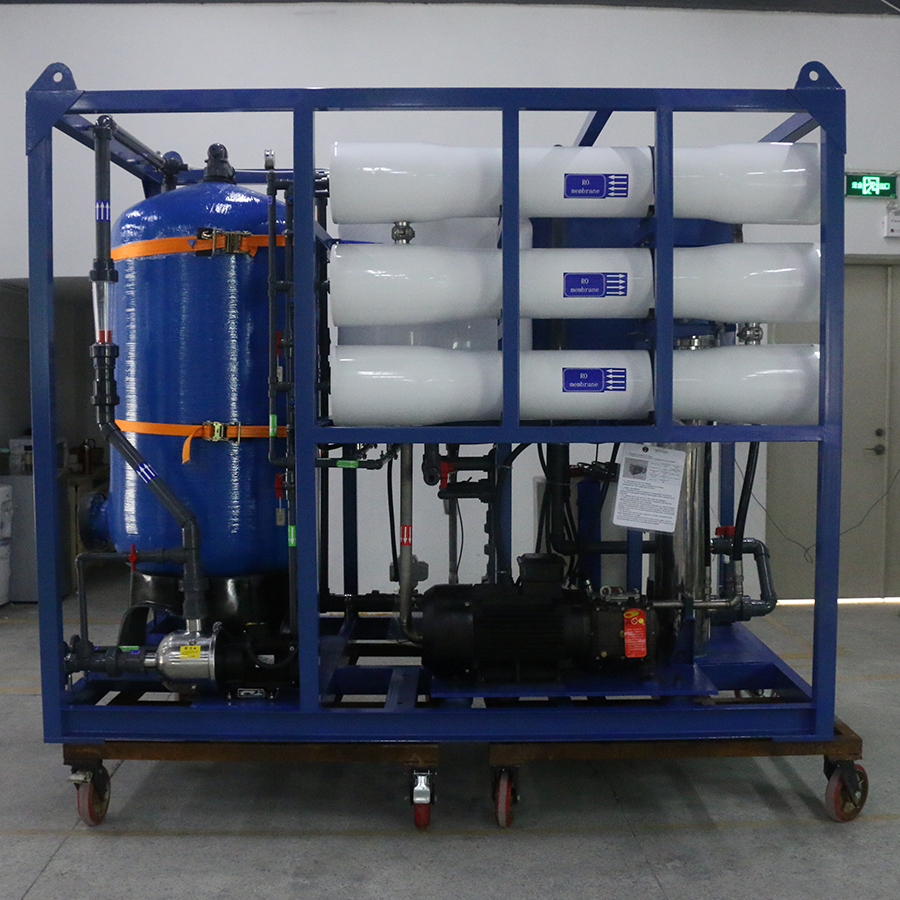07 Sep 2023
seawater desalination system
seawater desalination system

Seawater desalination is the process of removing salt and other impurities from seawater to produce freshwater that is suitable for various purposes, such as drinking, irrigation, and industrial uses. Seawater desalination systems typically involve several steps:
1. Pretreatment: Seawater is first pretreated to remove larger particles, such as debris, algae, and suspended solids. This step helps protect the desalination equipment from fouling and clogging.
2. Intake: Seawater is then taken from the source, usually the ocean, and brought into the desalination plant. This can be done through different intake methods, such as open intakes or beach wells.
3. Desalination: The most common desalination methods are reverse osmosis (RO) and multi-stage flash distillation (MSF).
- Reverse osmosis: Seawater is forced through a semi-permeable membrane, which allows the water molecules to pass through while rejecting the salt and other impurities. The separated freshwater is collected, while the concentrated brine is disposed of or further treated.
- Multi-stage flash distillation: Seawater is heated under high pressure, causing it to evaporate. The resulting vapor is then condensed into freshwater, while the remaining brine is discarded.
4. Post-treatment: The freshwater produced by desalination may still contain some residual impurities, so it undergoes post-treatment processes to ensure its quality. This may include disinfection, pH adjustment, and remineralization.

It's worth noting that seawater desalination requires a significant amount of energy and resources. However, advancements in technology have made the process more efficient and cost-effective, enabling its adoption in areas with limited freshwater resources.

Seawater desalination is the process of removing salt and other impurities from seawater to produce freshwater that is suitable for various purposes, such as drinking, irrigation, and industrial uses. Seawater desalination systems typically involve several steps:
1. Pretreatment: Seawater is first pretreated to remove larger particles, such as debris, algae, and suspended solids. This step helps protect the desalination equipment from fouling and clogging.
2. Intake: Seawater is then taken from the source, usually the ocean, and brought into the desalination plant. This can be done through different intake methods, such as open intakes or beach wells.
3. Desalination: The most common desalination methods are reverse osmosis (RO) and multi-stage flash distillation (MSF).
- Reverse osmosis: Seawater is forced through a semi-permeable membrane, which allows the water molecules to pass through while rejecting the salt and other impurities. The separated freshwater is collected, while the concentrated brine is disposed of or further treated.
- Multi-stage flash distillation: Seawater is heated under high pressure, causing it to evaporate. The resulting vapor is then condensed into freshwater, while the remaining brine is discarded.
4. Post-treatment: The freshwater produced by desalination may still contain some residual impurities, so it undergoes post-treatment processes to ensure its quality. This may include disinfection, pH adjustment, and remineralization.

It's worth noting that seawater desalination requires a significant amount of energy and resources. However, advancements in technology have made the process more efficient and cost-effective, enabling its adoption in areas with limited freshwater resources.